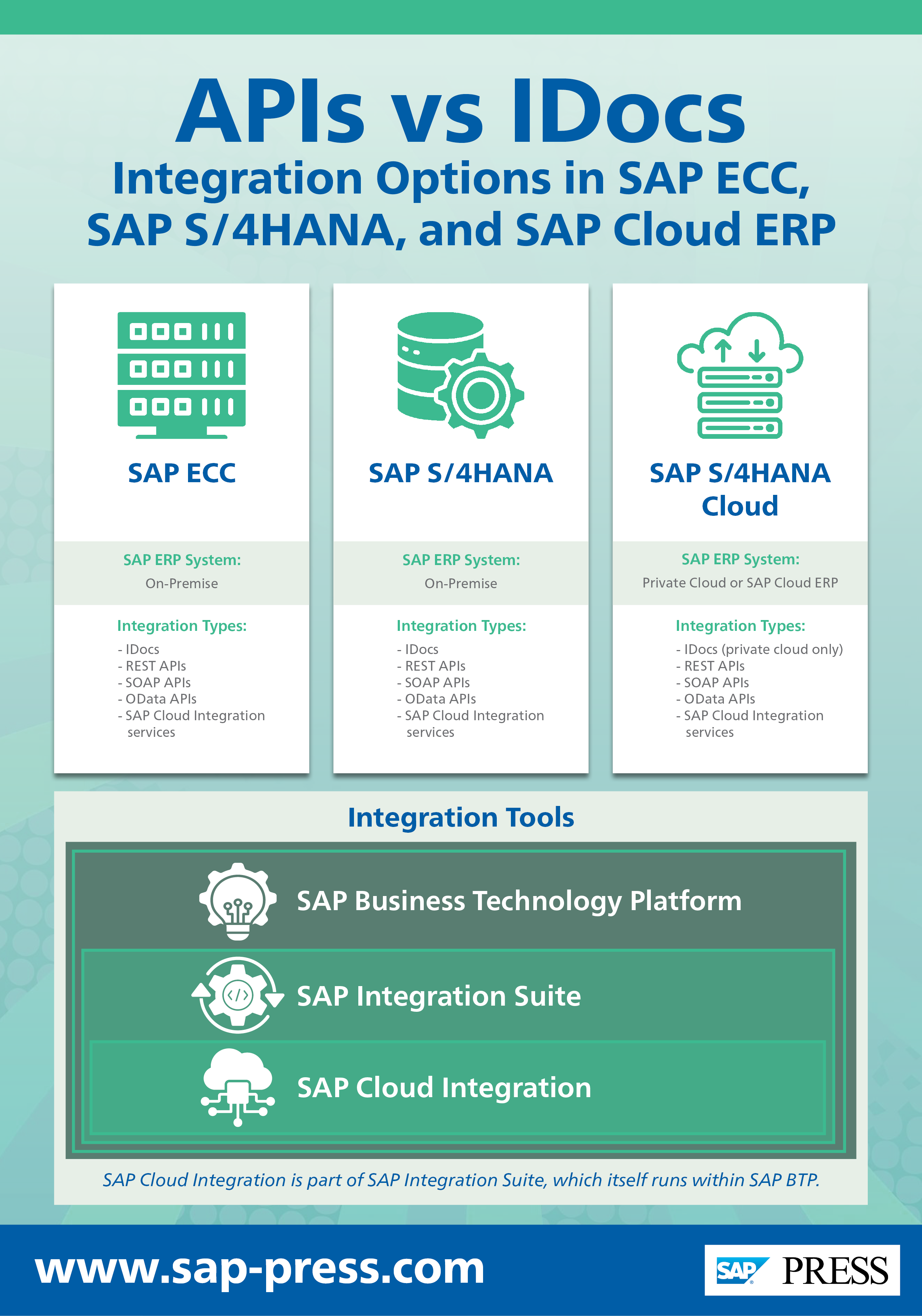What if I told you that IDocs no longer exist in SAP S/4HANA Public Cloud?
Would you believe me if I told you that SAP has developed a more efficient API than their proprietary IDocs, which we have known and loved for so long? What about auditing an API interface or querying IDoc tables as we did in the past? A few months ago, I would have never believed anyone if they told me this.
Comparing Integration Across SAP Landscapes
Have you ever wondered about or known the differences in how the SAP S/4HANA ERP integrates into other applications and systems? What about the integration deltas from the older SAP ECC 6?
If you've landed on this post, you may be intrigued, like I was, when I heard that IDocs are no longer supported in SAP S/4HANA Cloud, now renamed SAP Cloud ERP (beginning with version 2508), in their latest public cloud release for August 2025. The flagship cloud ERP for SAP no longer supports traditional IDocs, unlike SAP S/4HANA on-premise, SAP S/4HANA Private Cloud, and the earlier SAP ECC 6 system, including its predecessors.
From IDocs to APIs: A Paradigm Shift
Let's explore the key changes in each SAP ERP system, which I've outlined below. For this post, we will focus on native SAP products and solutions that simplify integration while being optimized for enterprise organizations. While there are many ways to achieve point-to-point integration, SAP has now leveraged APIs in SAP S/4HANA Public Cloud, now known as SAP Cloud ERP. As of this writing, SAP S/4HANA has over 800 different APIs, and the list continues growing.
On SAP's website, you'll find an array of the most common APIs and connectors that enable your organization to quickly implement connections to native SAP systems and applications, as well as disparate systems.
The Role of SAP BTP
You should also understand the SAP Business Technology Platform (SAP BTP) architecture and the applications that fall under this umbrella. SAP BTP is SAP's PaaS (Platform as a Service), the environment for AI, integration, data, analytics, and application development. It enables SAP customers to extend their systems even further to disparate systems.
SAP Integration Suite and SAP Cloud Integration
SAP Integration Suite: was developed as an autonomous integration platform that enables businesses to integrate SAP applications and any disparate system or application.
SAP Cloud Integration, formerly known as SAP Cloud Platform Integration, is a sub-application of SAP BTP and SAP Integration Suite. Furthermore, SAP Cloud Integration is a cloud-based platform that enables organizations to securely integrate with other systems and applications for both on-premise and cloud-based environments. It also supports standard connection protocols via HTTP (Hypertext Transfer Protocol), HTTPS (Hypertext Transfer Protocol Secure), various flavors of FTP (File Transfer Protocol), EDI (Electronic Data Interchange), XML (Extensible Markup Language), and JSON (JavaScript Object Notation).
Common Message Types and Interfaces
Below are the most common message types or interfaces that integrate with the more recent SAP ERP systems. Please reference the infographic below as well.
- IDocs (Intermediary Documents): SAP's proprietary messaging tool
- SOAP (Simple Object Access Protocol): Based on XML messaging standards
- OData (Open Data Protocol): Used for web APIs via HTTP, JSON, and AtomPub
- REST API (Representational State Transfer Application Programming Interface): Based on standard web protocols, typically using HTTP and JSON

The Future of SAP Integration
When all is said and done, the most shocking thing to know is that IDocs no longer exist in SAP Cloud ERP (Public Cloud)! SAP has done away with its de facto standard for messaging, but what's important to understand with any evolving technology is that we need to adapt quickly.
Eventually, all three SAP S/4HANA system landscapes will no longer utilize IDocs, and APIs will be the only way forward.
Conclusion
The move away from IDocs in SAP Cloud ERP marks a turning point for SAP integration. While SAP ECC and SAP S/4HANA on-premise or private cloud systems continue to support legacy methods, the future is clear: APIs are becoming the standard. With hundreds of APIs already available and SAP BTP providing a robust foundation for integration, organizations need to start preparing now.
Shifting your mindset from IDocs to APIs will not only keep you aligned with SAP’s roadmap but also position your business to take advantage of more scalable, flexible, and efficient integration strategies.
Be ready!
This post was originally published 10/2025.





Comments